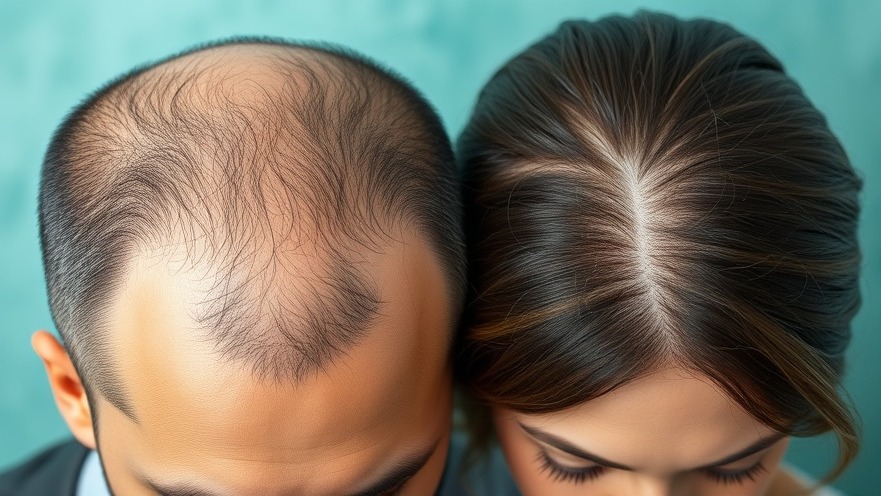
Understanding Androgenetic Alopecia: A Common Condition
Androgenetic alopecia, commonly referred to as male or female pattern baldness, is a widespread condition that affects many adults, regardless of gender. This form of hair loss isn't just about genetics—it's influenced by hormonal changes and other factors that can vary significantly between men and women. Understanding the differences in how this condition manifests can empower those affected to seek appropriate treatment and management options.
The Age Factor: When Does Hair Loss Start?
For many men, the journey of hair loss begins in their thirties, although some may notice changes even in their late teens. Dr. John Browning, a dermatologist, points out that by age 50, around half of men exhibit signs of androgenetic alopecia. In contrast, women typically experience hair loss later, often after menopause. This delay can be attributed to hormonal changes that affect hair follicles, with a reduction in estrogen and an increase in androgen levels contributing to thinning hair.
How Hair Loss Appears Differently in Men and Women
The pattern of hair loss also differs significantly between genders. Men often experience thinning at the hairline and crown, which creates a noticeable bald spot. On the other hand, women's hair thinning typically occurs more diffusely across the scalp. Women may develop a broader part or experience thinning at the top of the head, while the front hairline usually remains intact. Total baldness is quite rare in women, emphasizing the significance of understanding these different patterns.
The Role of Hormones in Hair Health
Hormones play a pivotal role in hair growth and loss, particularly as individuals age. In men, testosterone is converted to dihydrotestosterone (DHT), which can shrink hair follicles and shorten the hair growth cycle. For women, hormonal fluctuations related to menopause can lead to increased levels of androgens, which may also contribute to hair loss. Understanding these hormonal influences is crucial for developing targeted treatments.
Treatment Options: From Medications to Lifestyle Changes
When it comes to managing androgenetic alopecia, there are various treatment options available. For men, medications like minoxidil and finasteride can slow hair loss and promote regrowth in some cases. Women may also use minoxidil, though they might need different formulations depending on their unique hair loss patterns. Lifestyle changes, such as maintaining a balanced diet rich in vitamins and minerals, can support overall hair health. It's beneficial for both men and women to consult with dermatologists who can provide personalized treatment plans based on individual needs.
The Emotional Impact of Hair Loss
Baldness can often carry emotional implications, affecting self-esteem and quality of life. Unlike earlier generations, where people might have silently dealt with hair loss, today's culture emphasizes openness and self-acceptance. Those experiencing hair loss should know they aren't alone; many find community support and resources, enabling them to navigate their hair loss journey with confidence.
Taking Action: Steps to Manage Hair Loss
If you or someone you know is dealing with anxiety over hair loss, proactive steps can make a big difference. Scheduling an appointment with a dermatologist can provide clarity on the type of hair loss and appropriate treatments available. Patients can also benefit from joining support groups or connecting with others who understand the emotional side of hair loss. Beyond medical treatments, incorporating stress-reducing activities such as yoga and meditation can promote better overall health, benefiting hair as well.
Empowerment Through Education
Greater knowledge about androgenetic alopecia can lead to better outcomes. By understanding the contrasts between male and female patterns, individuals can navigate their options more effectively. It's empowering to have informed discussions with healthcare providers about what strategies might work best for personal circumstances.
Ultimately, hair loss, whether it occurs early or later in life, is not a definitive statement about one's identity. Everyone deserves to feel confident in their skin, and recognizing the potential for effective management can lead to a more positive outlook.
Take control of your health journey today. If you are noticing changes in your hair, don’t hesitate to reach out to a trusted healthcare professional. Together, you can explore your options and create a plan that works for you.
 Add Row
Add Row  Add
Add 




Write A Comment